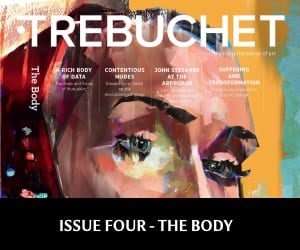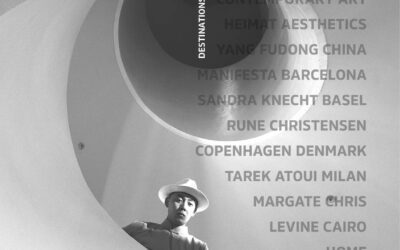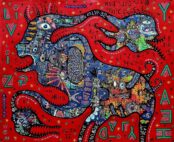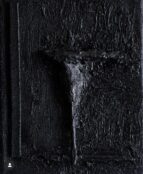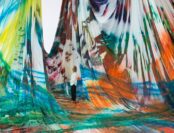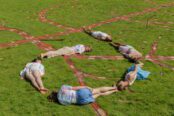[dropcap style=”font-size:100px; color:#992211;”]I[/dropcap]ncomplete, severed manifestations of trauma and lack are politicised and given context in Gail Olding’s vision.
Highly personal, she recalls experiences from her family life and reflecting her social and political concerns, and as with any successful and accomplished artist, she has found ways to make these authentically experienced subjects universal, layering life experience with criticism and adopting a poetic, multi-discipline approach. The works have a strong physical presence, often directly referencing the human body either in anthropomorphic forms or large phallic weapons.
Born in London, Olding studied for her BA (Hons) at The London College of Printing in Photography in the late 1980s and during the ’90s went on to study at The University of Westminster and Central St. Martins to complete two MAs: one in Photography and one in Fine Art. Formative experiences included studying painting with the painter Hermann Nitsch in Austria, and working with the late photographer Fay Godwin.
Olding found public recognition when she won the Eastern Arts Award in 1999, solidified in 2003 when she was nominated for Beck’s Futures art prize.
How do you define the body?
Defining the body is a difficult one. I am sure there is a good definition in a medical dictionary. On the one hand it’s a living functioning biological suit that I am wearing; it’s the place where I am looking out from. It is the thing that embodies me. And on the other hand, it is a war zone, a political issue, it’s a place of cultural control.
My grandfather had his foot amputated, then his leg to just above the knee. His hand was then amputated then eventually his entire arm due to gangrene. He also had false teeth and wore glasses. I was terrified of him as a small child; he would unscrew his hand and screw on a large hook to undertake various tasks. At night my grandmother would take him apart and put him to bed; his false limbs were placed next to the bed, his teeth—in a glass of water—were placed on the bedside cabinet. In the morning she would put him back together again. His body was partly his and partly plastic in order to look whole/complete.
In the work called Hold Me Close there is a trolley on which there is a pair of cast plaster feet from which protrude from the top a hook and a claw/pincer. Here the body is missing; I realised that when I was life drawing I never drew the hands or the feet. Next to the plaster feet a glass knife speaks of fragility, and its lack of ability to perform its function properly. Next to which is a hairbrush threaded with long hair. The female child. In certain mythology, the cutting of the pubescent female’s long hair signals her sexual maturity.
My grandfather’s limbs were attached by a leather corset which was tied and strapped to his stumps; it was highly fetishistic. In the piece Pulse the pedals of the piano are present and on top sit the piano’s keys, which are played by the hands. The body is missing. Next to this is a pile of ash—possibly the missing body returning to dust. Behind which is an animal trap. We are trapped in our own bodies.
In what way do you feel you’ve pushed your conception and application of the body?
I feel that I have explored the body from the starting point of disability and…
Read this article in full in Trebuchet 4 – The Body

Michael Eden is a visual artist, researcher and writer at the University of Arts London exploring relationships between monstrosity, subjectivity and landscape representation.

